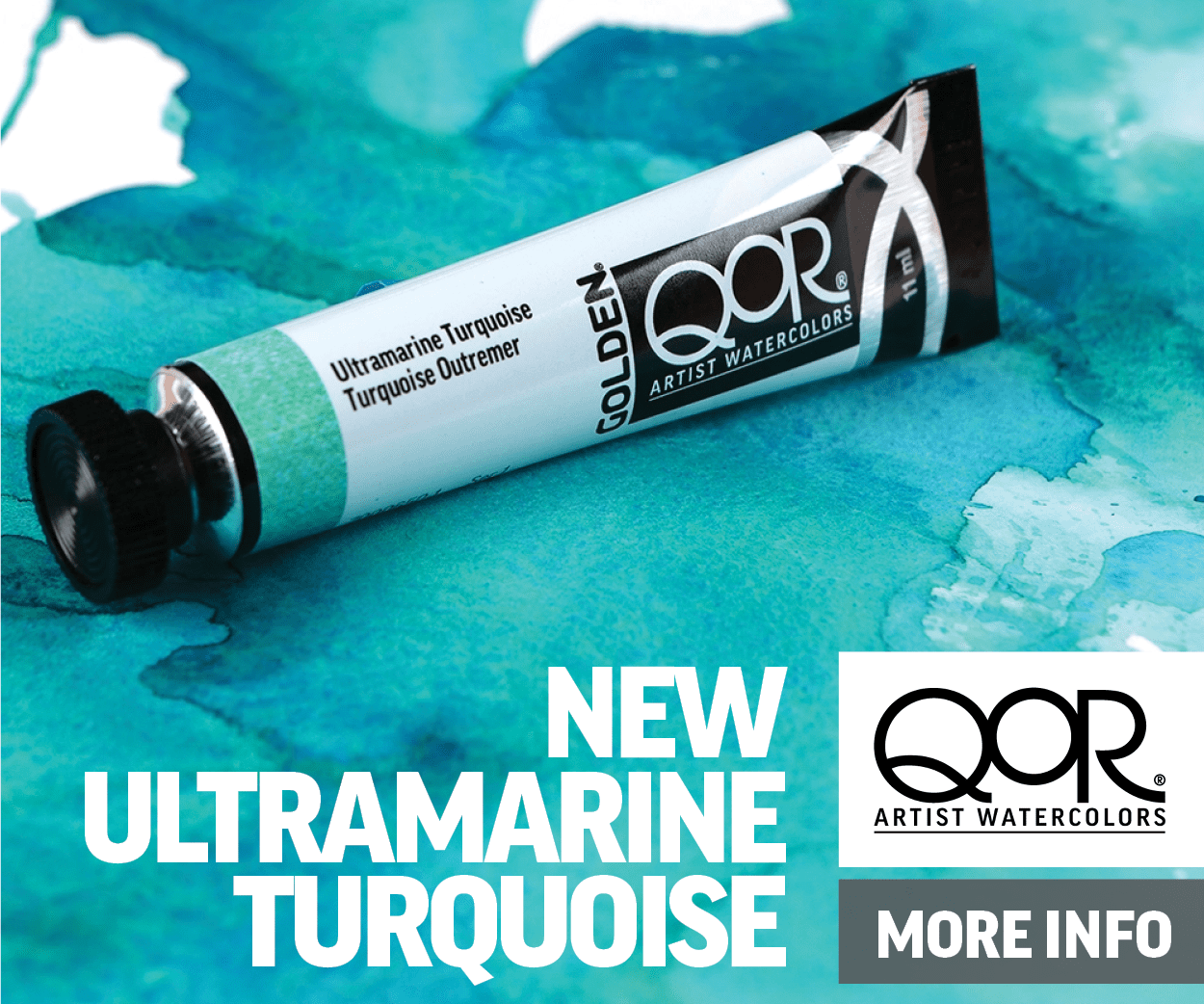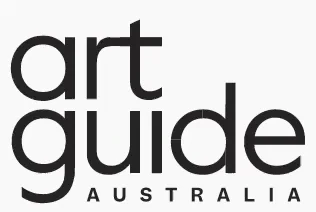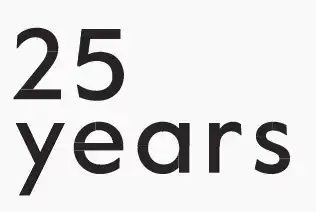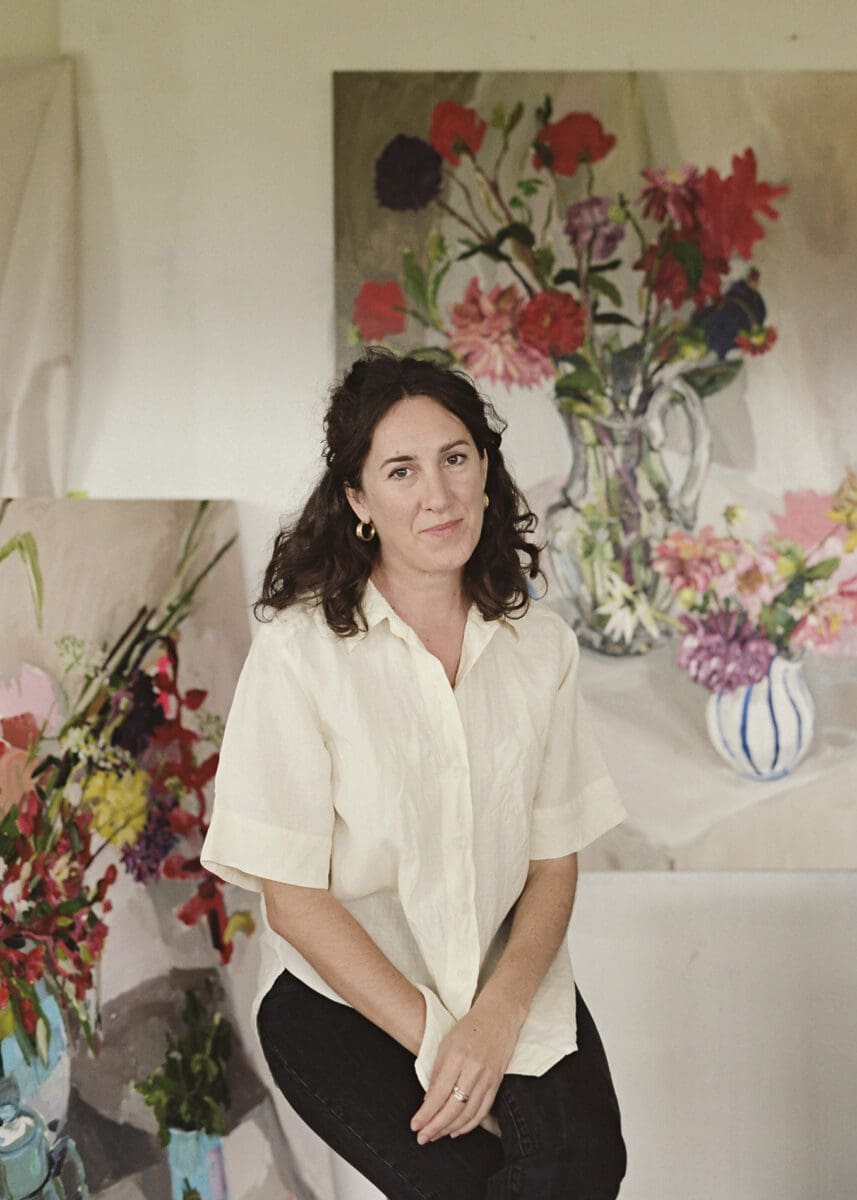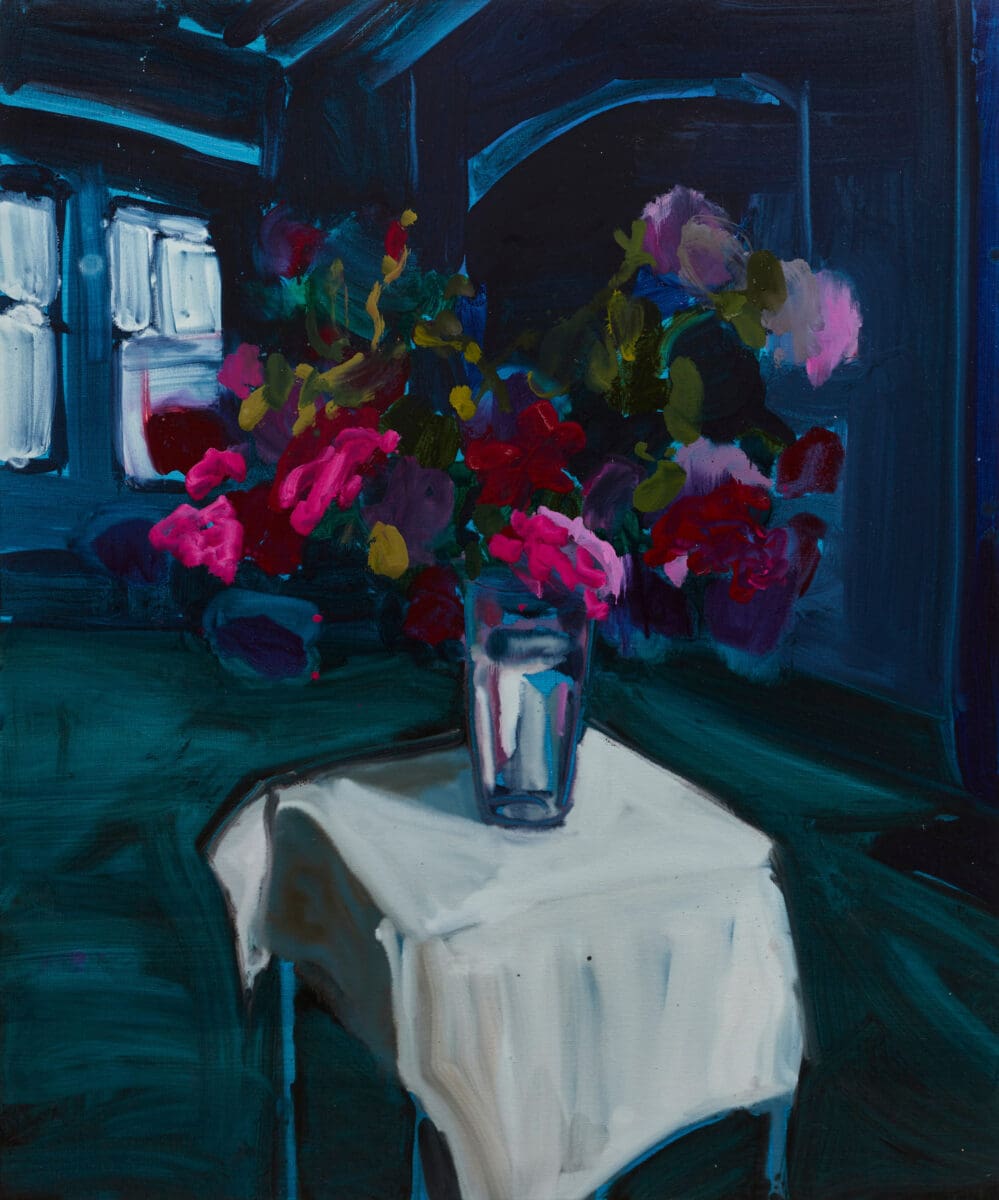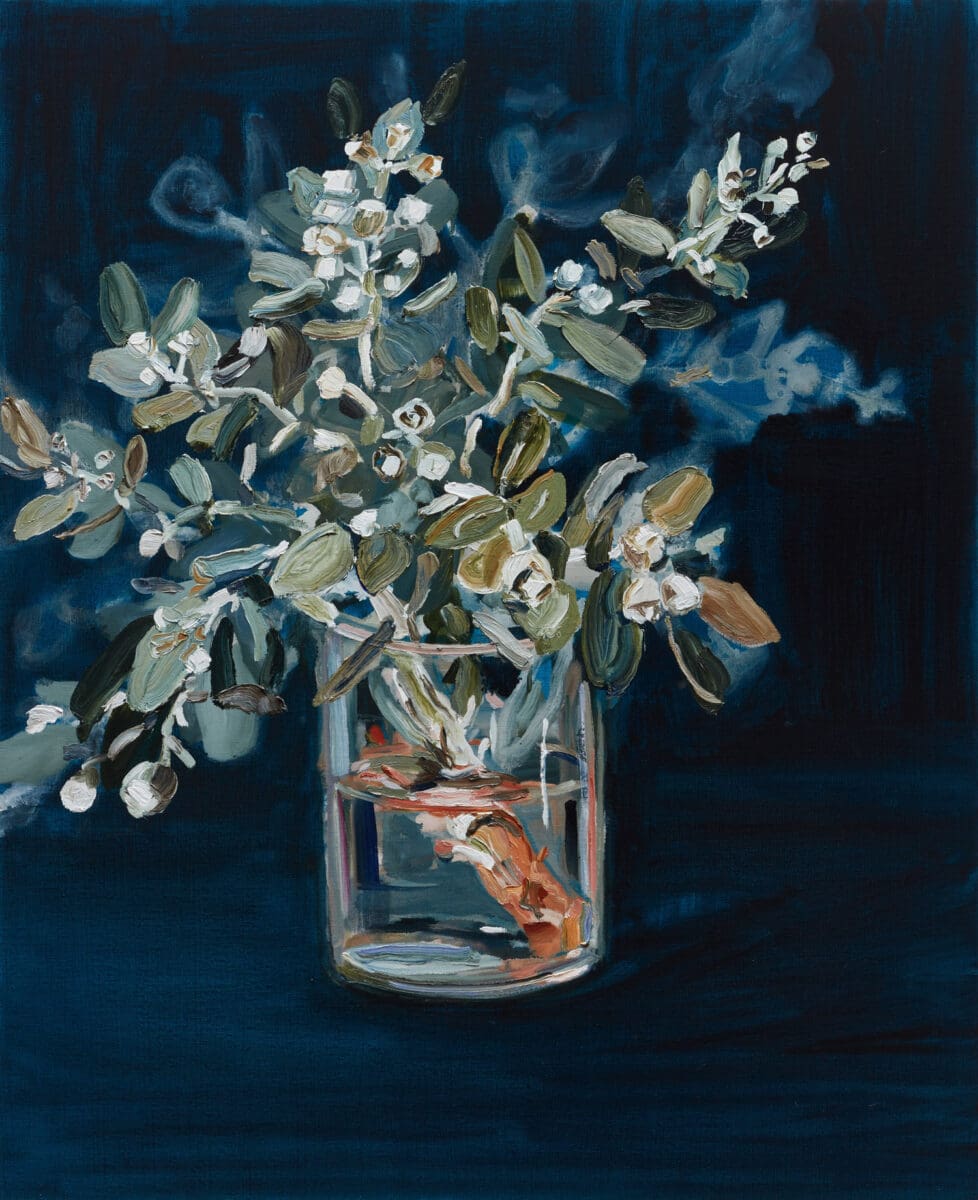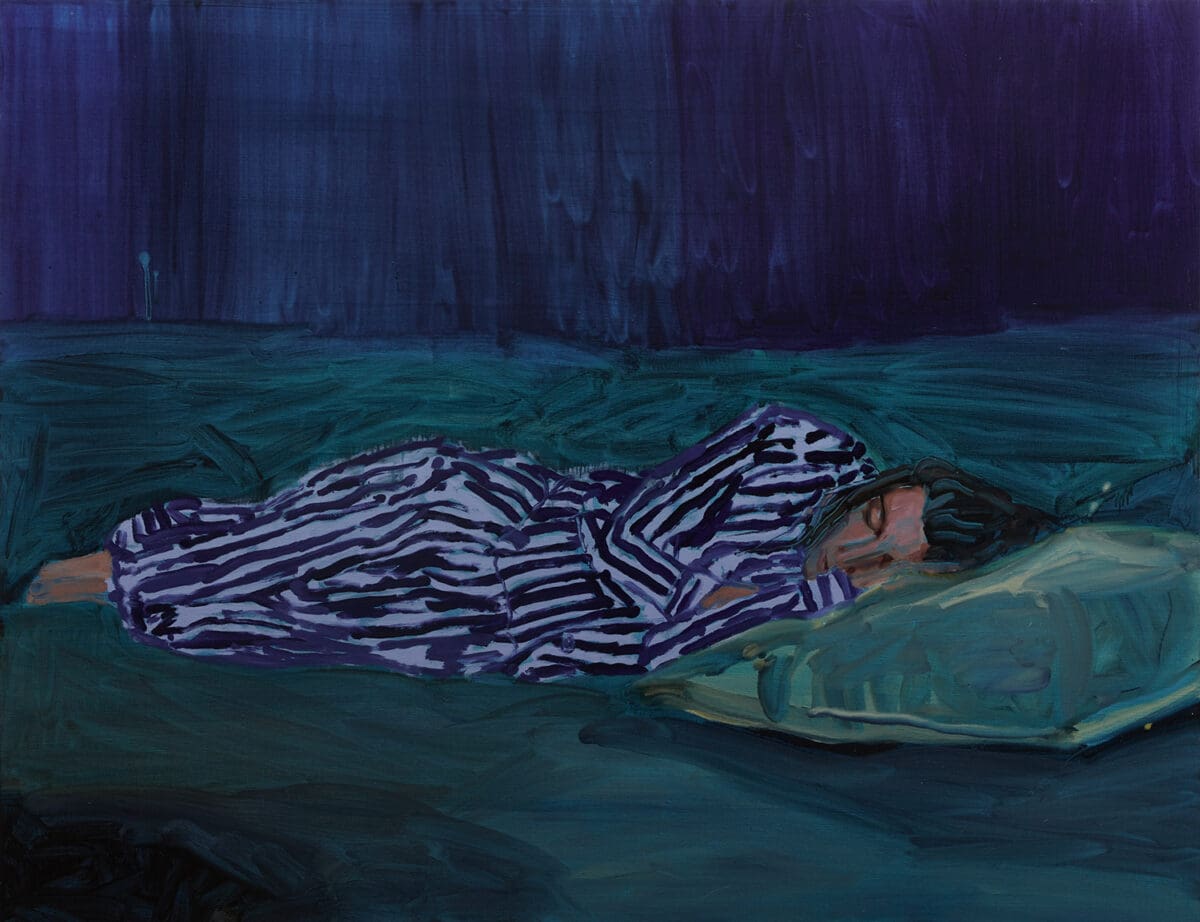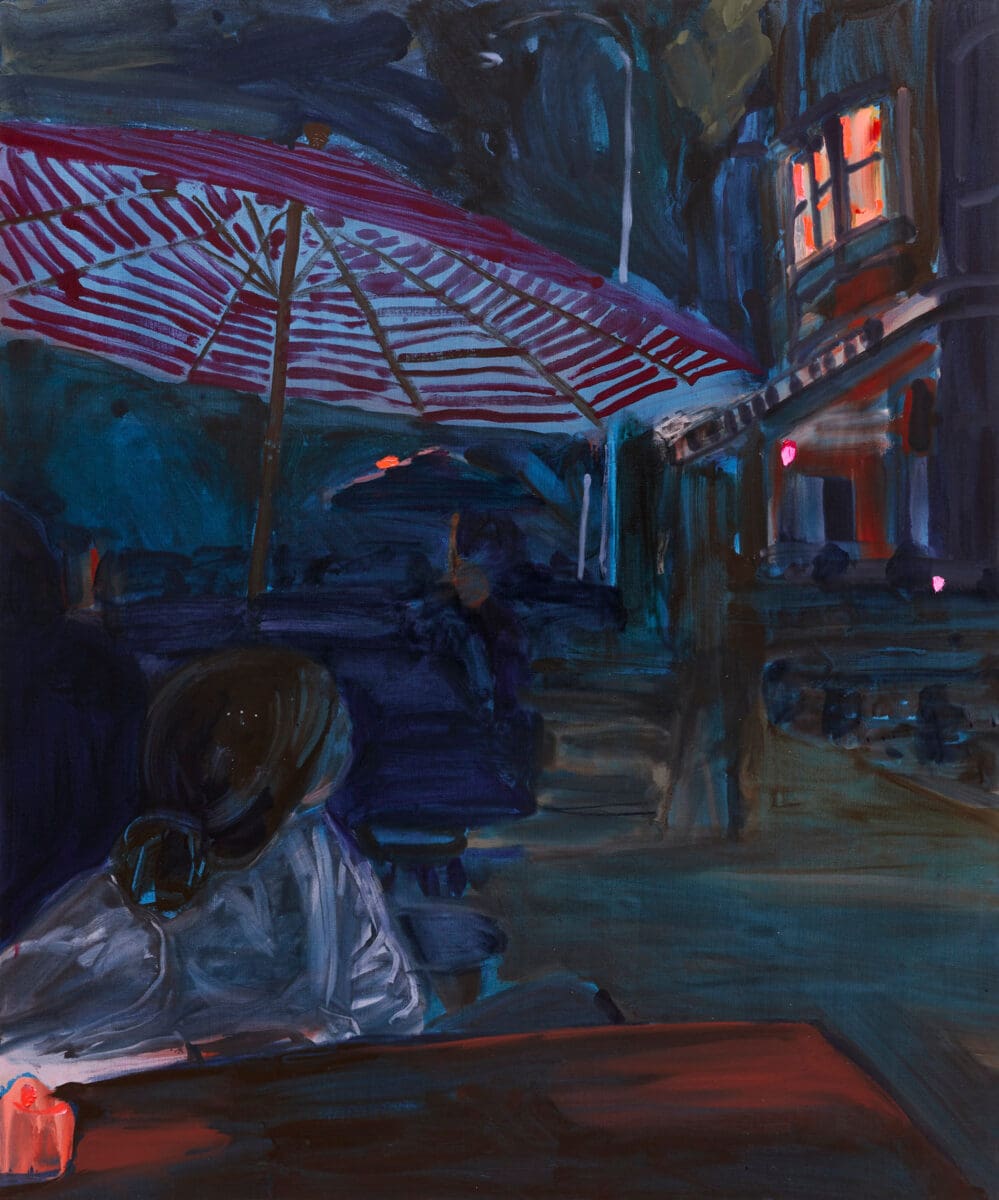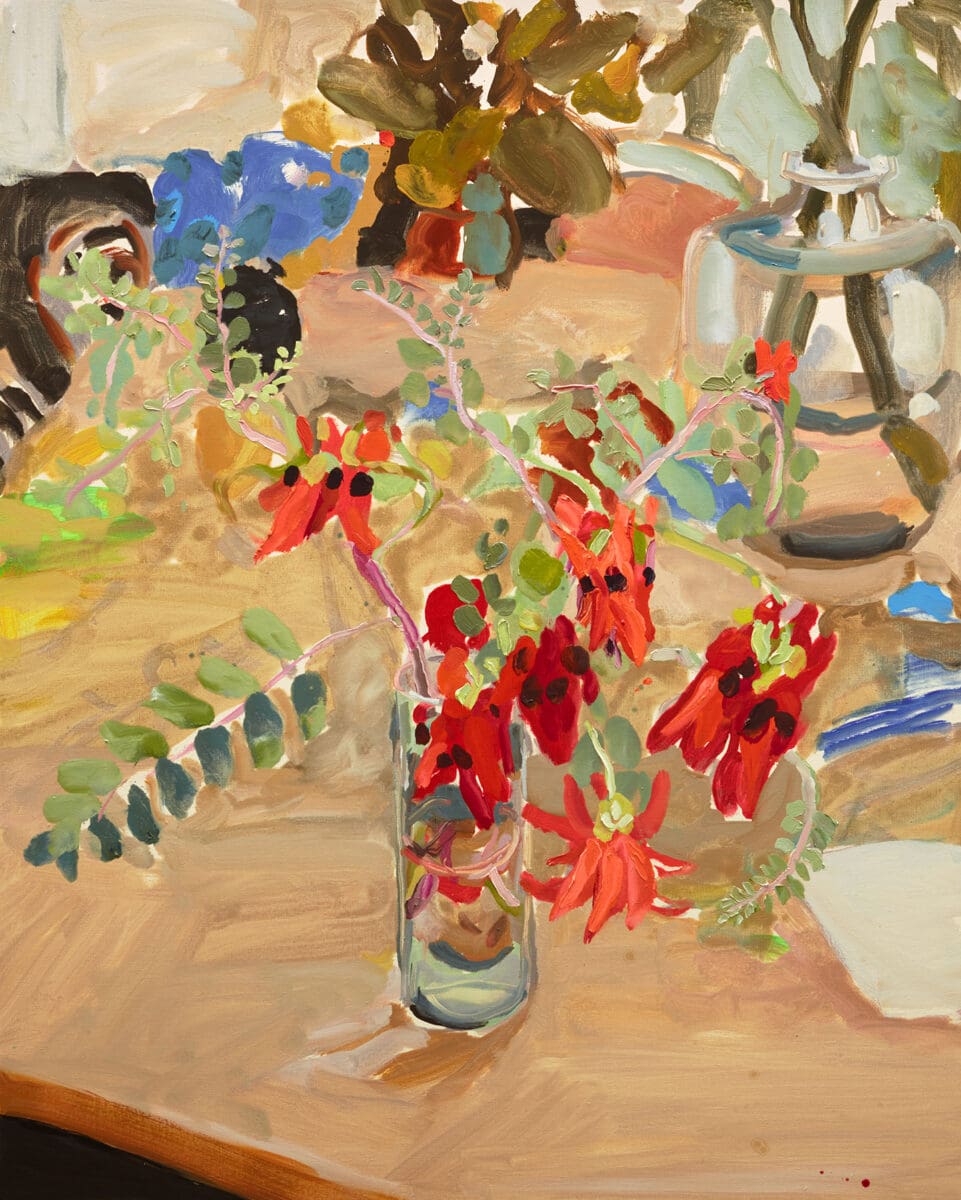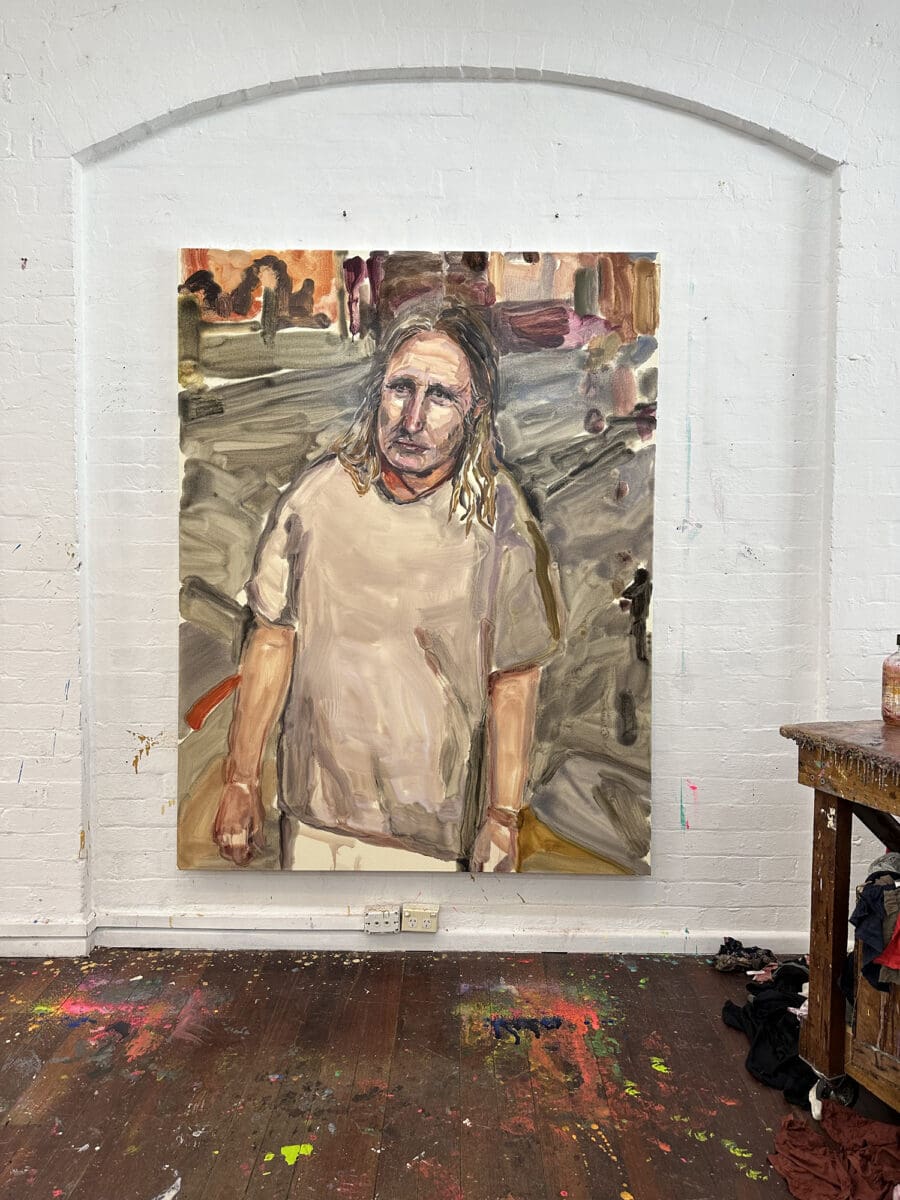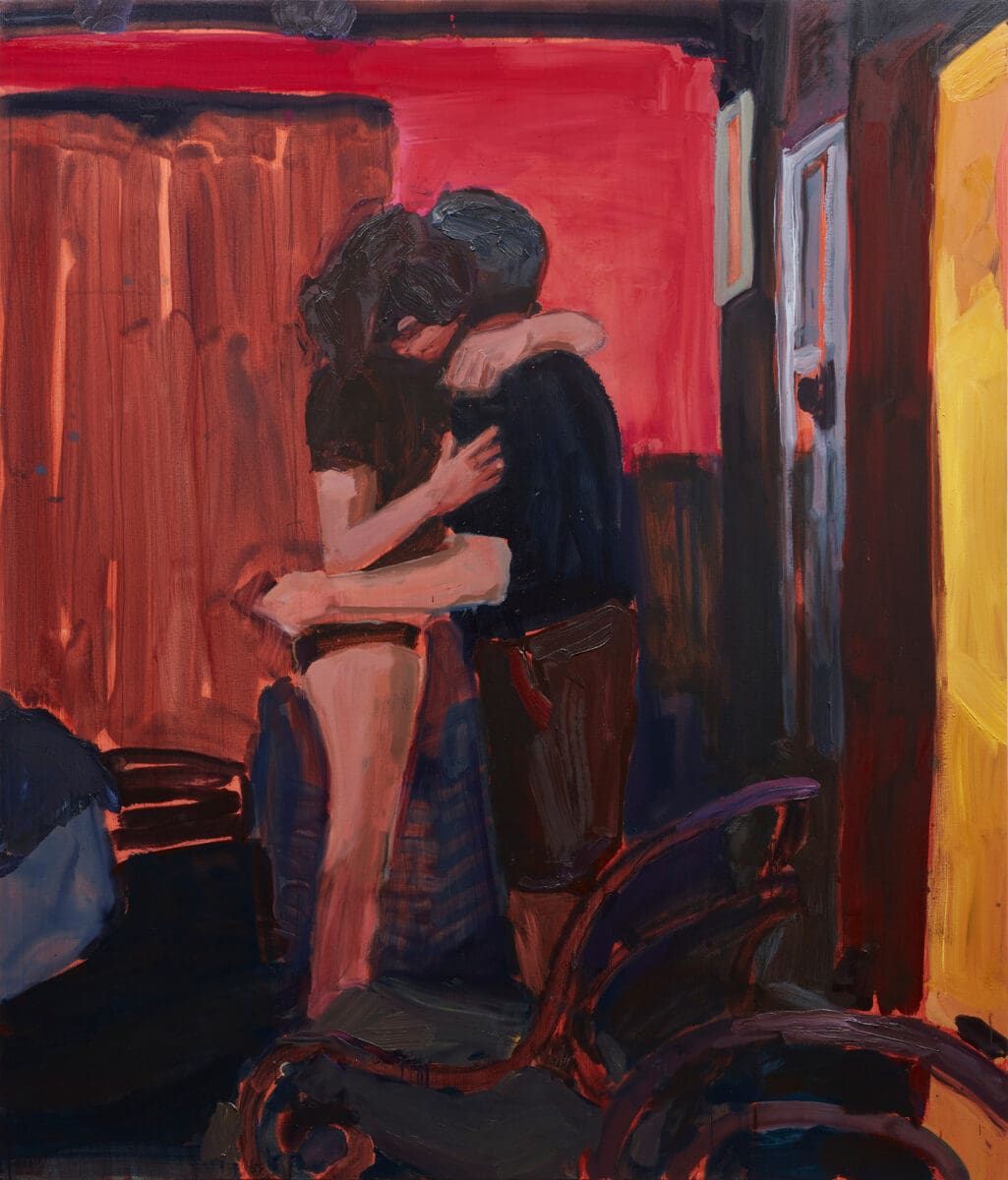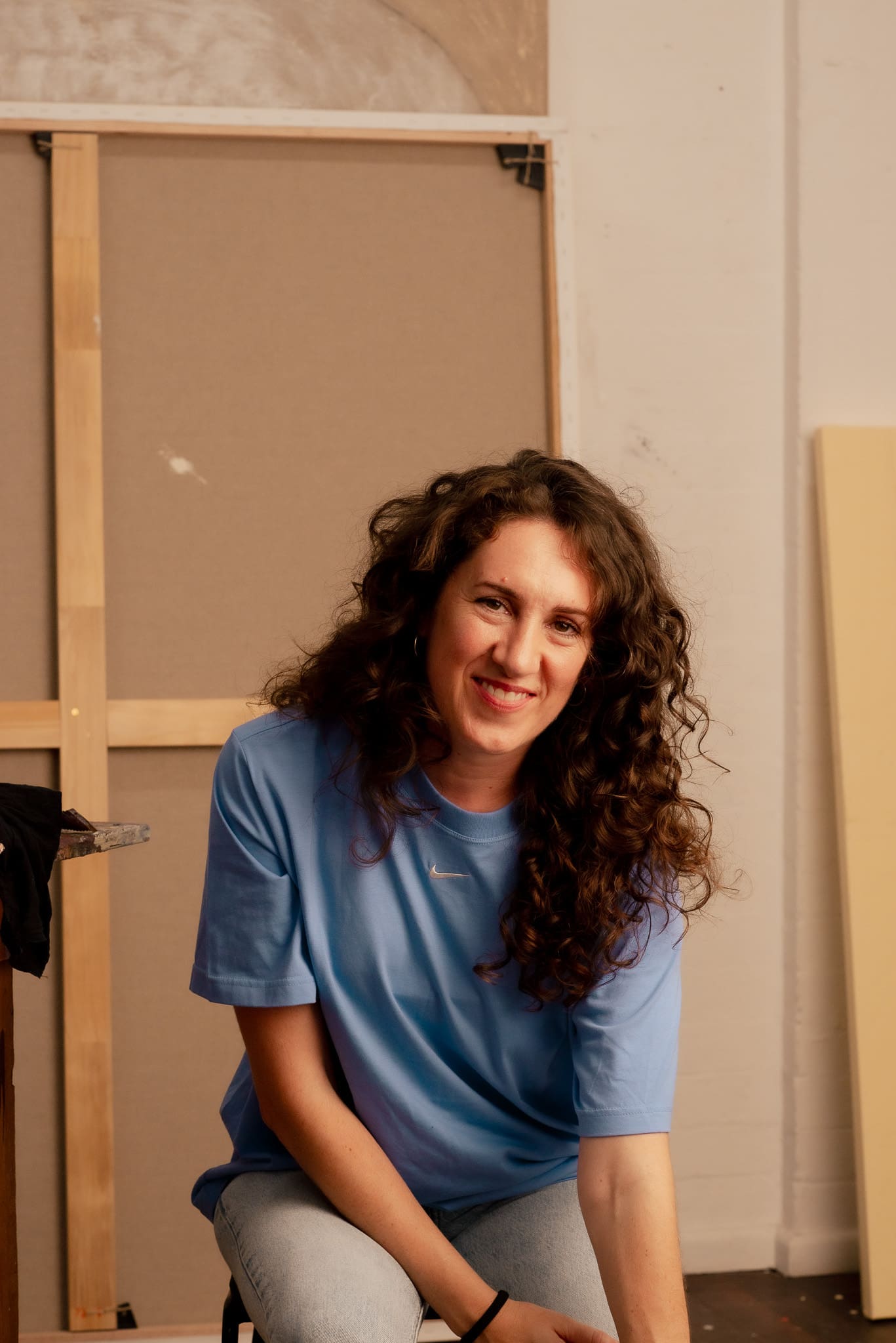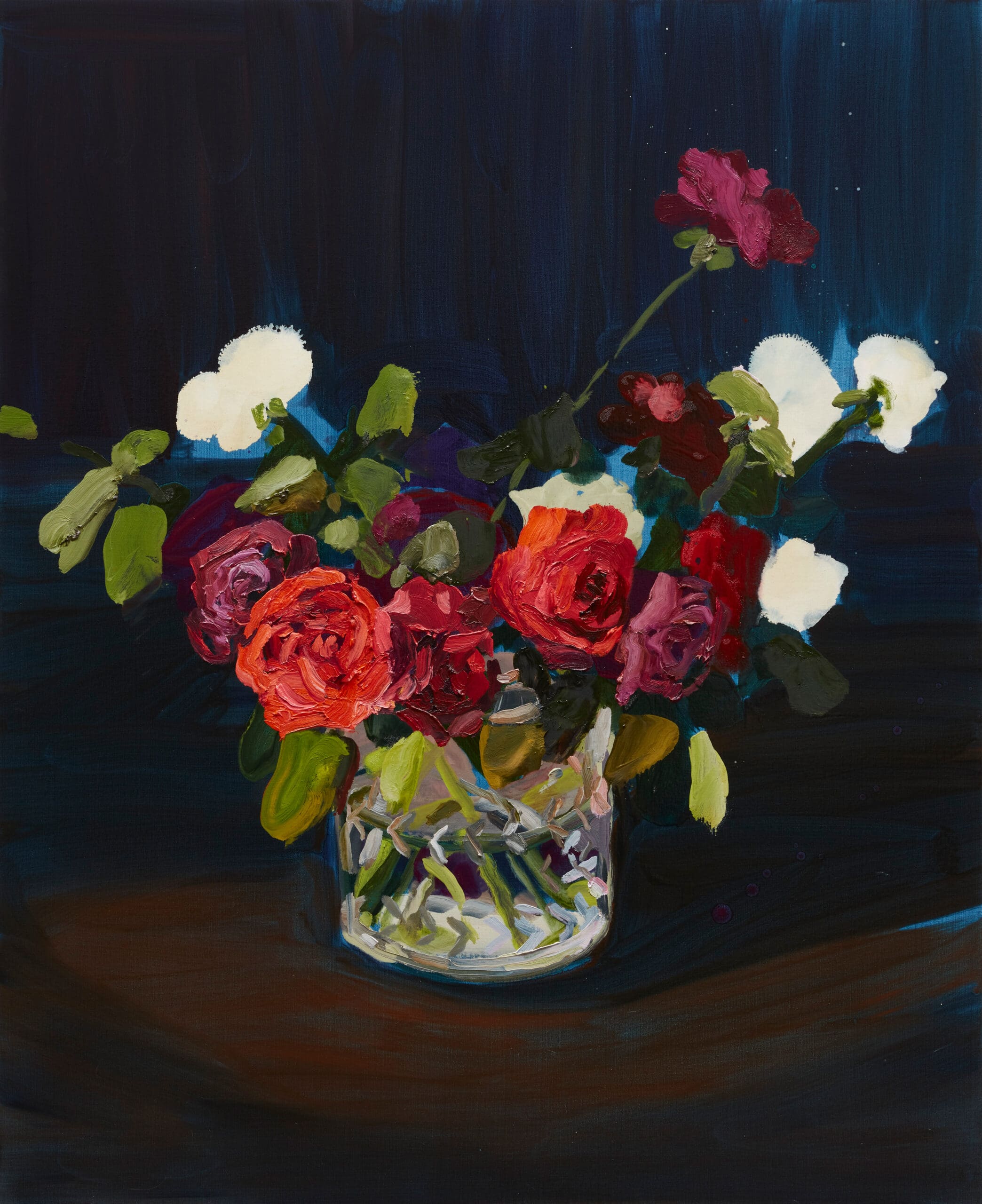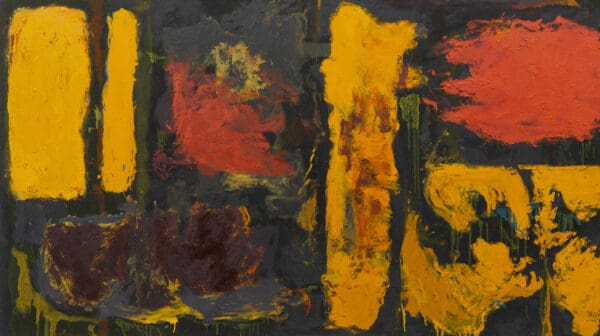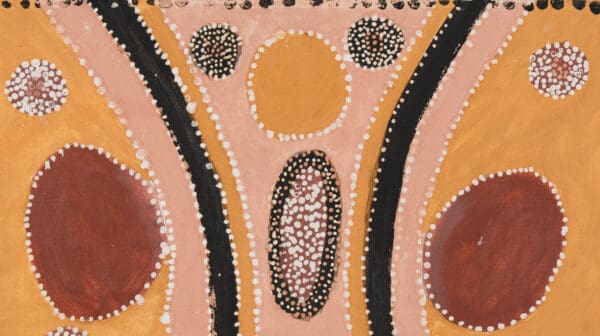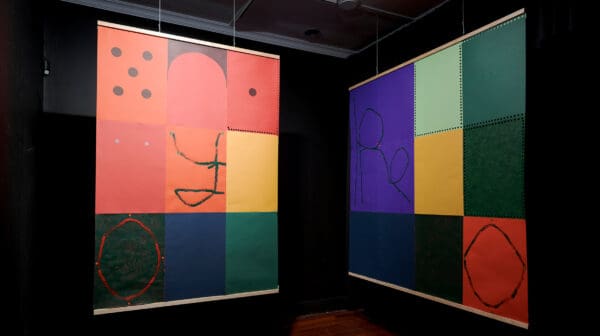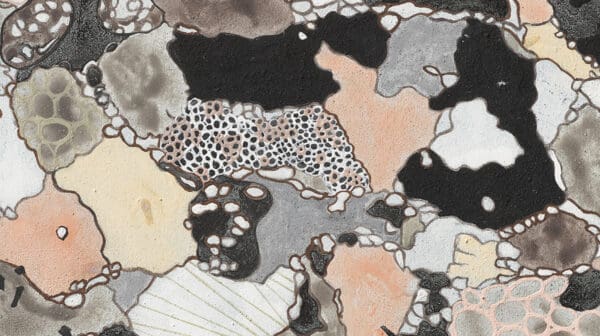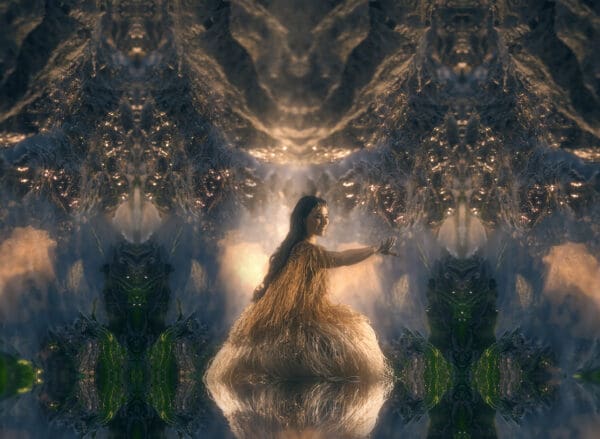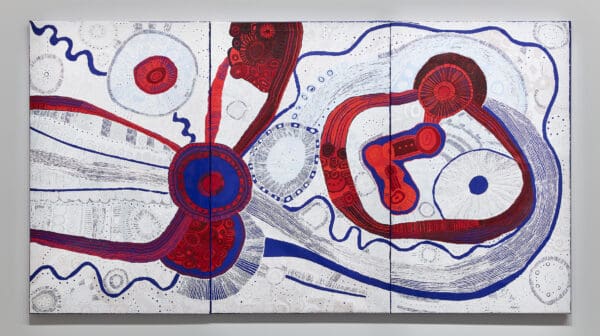The paintings of Laura Jones are at once quiet and expressive. Domestic scenes in still life—plants, flowers, interiors, figures—come to life with broad, gestural strokes that evoke a sense of time and place. Jones has long been interested in the relationship between humans and their natural environment, and her paintings capture the moment they intersect. Her environmental interests led her to meet acclaimed author and conservationist Tim Winton, and subsequently paint his first portrait. Tim Winton won Jones the coveted Archibald Prize in 2024. Ahead of her solo exhibition at Jan Murphy Gallery, we asked Jones 20 quick questions about paint, process, and practice.
Describe your practice in seven words?
Sensitive, colourful, gestural, evolving, beautiful, ugly, messy.
Your first art love?
The linocut!
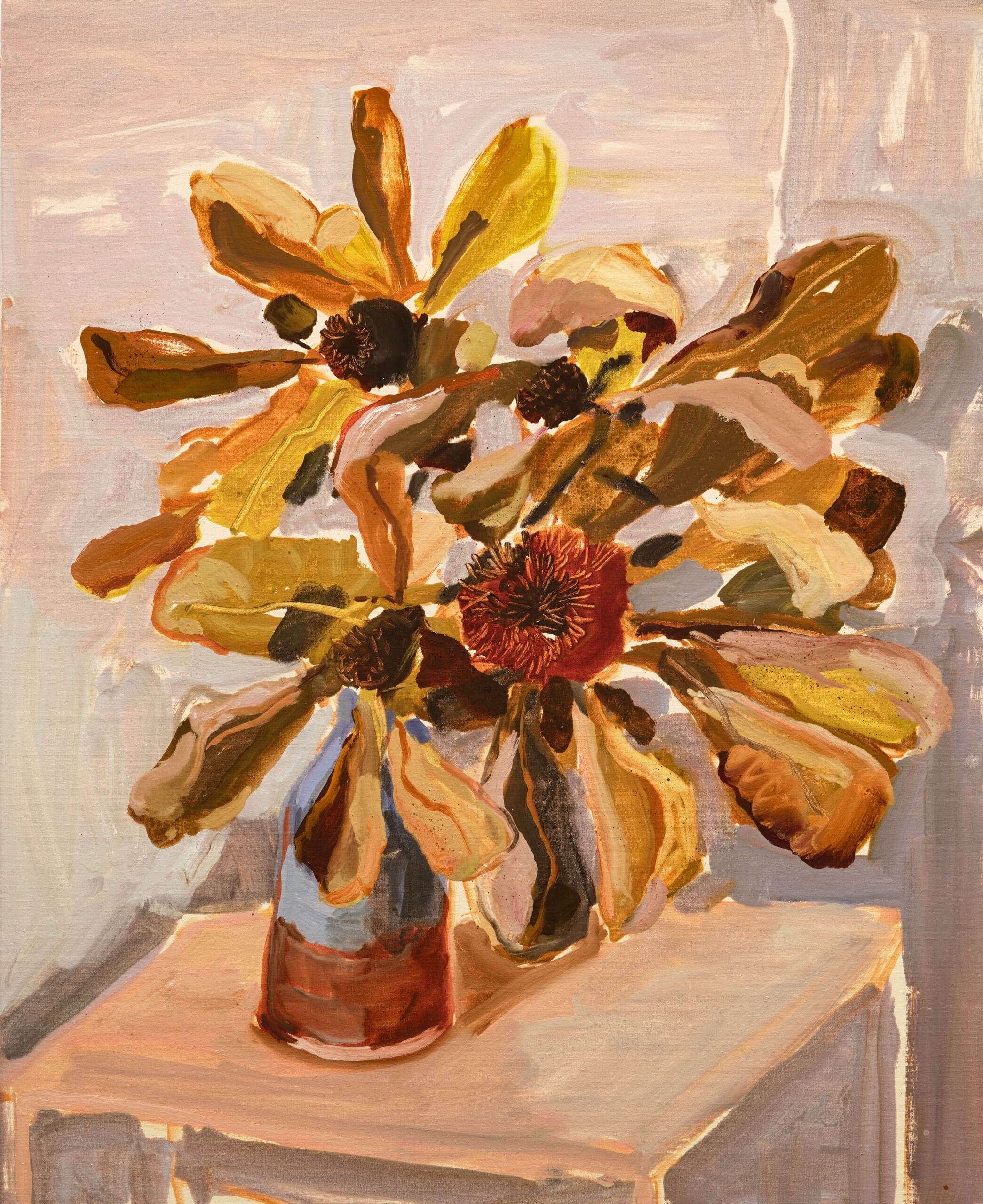
Your paintings explore the relationship between humanity and nature—what is it about this intersection that interests you?
The world holds us and we are inseparable from the environment. With climate change we are all constantly living in an existential state of concern. It’s the umbrella and backdrop to all of our life events, and human interactions and emotions. I feel like that is worth documenting as we navigate our everyday lives. Nature will go on without humans, which makes you think about your mortality all the time.
How important is place to you when creating?
It’s everything. My environment is very important to me. I also like my studio to feel just right. I need to feel settled to paint. When is the best time of day for painting? I usually hit my stride in the afternoon and heading into the evening. My mornings are all admin and life stuff and so I try to get those distractions out of the way to clear my head before I start.
What would a typical working day look like for you?
I’ve been commuting to Darlinghurst from Kurrajong so usually it’s coffee, drive, and some exercise. I write in my journal when I get to the studio. Then I throw myself into painting as quickly as I can, having short breaks throughout the day to reflect on what I’ve done. I’ll paint until it starts going south or until I get hungry! Sometimes I get visitors and chat to other artists in the building about what we’re working on.
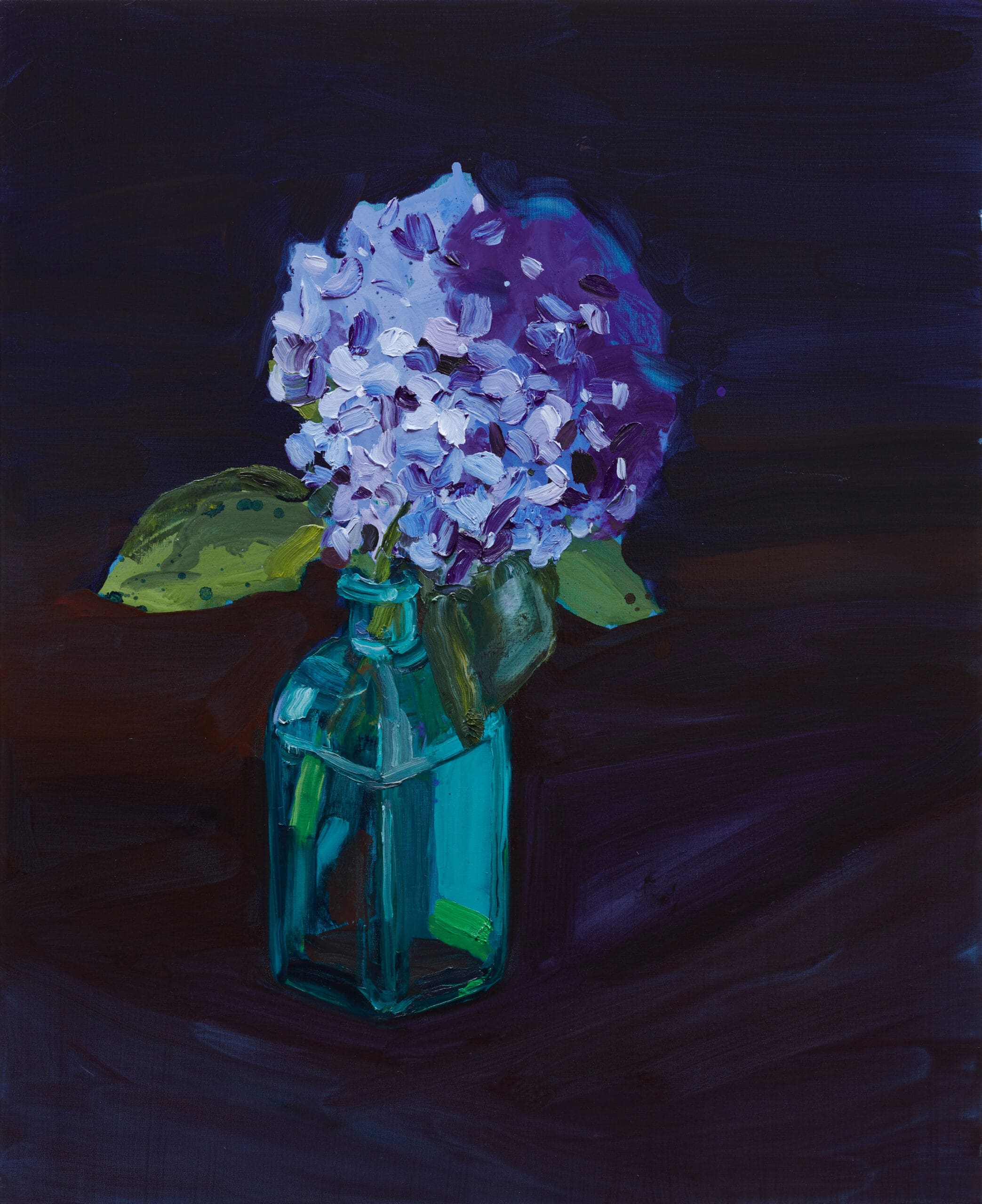
What do you think can be revealed in a still life?
Still life continues to be the most effective way for me to convey emotion through paint. It’s such a striking metaphor for life and time passing. I’m obsessed with flowers. They hold the answers to almost everything. I also like that you can get lost in the form and problem-solving. I’m equally obsessed with the process of painting.
If you could collaborate with any artist, dead or alive, who would it be?
Vincent Namatjira!
Painters who’ve influenced your work?
I’m going through a [Pierre] Bonnard phase at the moment. But I would have hundreds of influences. We are all collectively pushing forwards and learning from each other and from the past in conscious and subconscious ways.
Your 2024 Archibald Prize-winning portrait of Tim Winton was the first entry of the author—what was that process like?
I absolutely loved meeting Tim. His face was like a landscape of stories and I really wanted to convey his concern for the environment, his sense of urgency about climate inaction, and love for writing. I met him in his hometown of Fremantle in Western Australia and our conversation was seared into my memory, which really helped when it came to making the painting.
Do you have any desire to explore portraiture more in your practice?
I’ve actually started incorporating a lot more figures into my work since I’ve started painting interiors. Particularly relationships between figures and how that can bring a space to life. I’m trying to paint people as if they are still life and not get too caught up in the details. There’s an equalising of the picture plane that has to happen so that the viewer can empathise with the figures and find a way into the painting.
The most interesting thing someone has said to you about your work?
That there’s an honesty about it. I do wear my heart on my sleeve and I think it shows.
Best advice you’ve been given about making art?
Keep going. Work hard. Don’t be afraid of making mistakes—there is no such thing. Start again and again and again…
Beauty or politics?
Both. They are inseparable.
Order or chaos?
Both! Life is a balancing act; I alternate going in both directions and pull back when I feel I’m going too far down one path.
An art experience that’s stuck with you?
The Archibald! Also—painting on Lizard Island at the Australian Museum Research Station and meeting scientists during a mass bleaching event on the Great Barrier Reef. It taught me that art and science have many similarities and we need to bring them together to address global issues.
Favoured paint brand?
Langridge. It’s Australian made and I love the colours and mediums.
Quick advice for young artists?
Work as hard as you can and it will come back to you in some way. Don’t give up. Have as much fun as you can juggling it all.
What can we expect to see in your new solo show at Jan Murphy Gallery?
I’m going through a blue phase. I’m living in the town I grew up in and finding myself leaning into the nostalgia and melancholy of time passing. I’m making still life and interiors that centre around a place I hold dear.
What would you like to do next?
A residency in Paris.
Midnight Blue
Laura Jones
Jan Murphy Gallery
(Brisbane/Meanjin QLD)
13—31 May
This article was originally published in the May/June 2025 print edition of Art Guide Australia.

